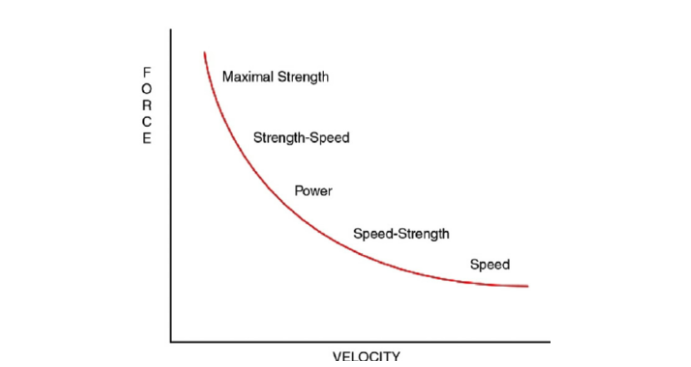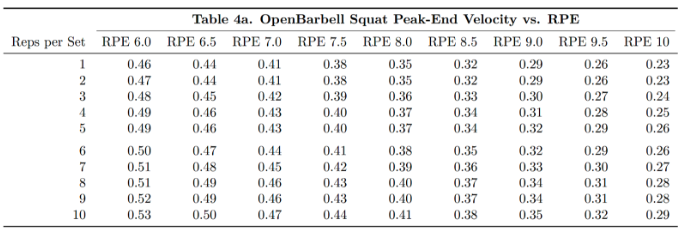- Force Velocity Curve
- Velocity Targets
- Minimum Velocity Threshold/v1RM
- RPE Targets
- Speed Targets
- Neuromuscular Fatigue
- Passive VBT
Force-Velocity Curve
Target velocity will shift based on the goal. For example, a powerlifter will typically aim for the lower speeds or maximal strength end of this force velocity curve (figure 2)(Weakley et al., 2021). However, basketball or football athletes might dance around the curve, ranging from maximal strength to speed (Table 2). This also shifts maximal strength capability and a subsequent shift in velocities presented at different intensities.

Figure 2. Chart of the force-velocity curve ranging from maximal strength to speed (Weakley et al., 2021).
Velocity Targets
Progressive overload is key in an effective training program. Therefore, incrementally decreasing velocity targets can be a great way to generate progress.
For example, let's say you have a goal squat set of 5 repetitions with a velocity target of 0.55 - 0.65 m/s for the day. Furthermore, in the following microcycle, one can decrease the velocity range target to 0.45 - 0.55 m/s to progress the difficulty of the squat.
This takes the guesswork of loading out of the equation, and allows you to just focus on execution and trusting your RepOne sensor.
The following table can be a useful guide towards planning velocity ranges for a training session:

(Table 1) OpenBarbell Squat Peak-End Velocity vs. RPE: The speeds associated with the corresponding RPE per rep.
Velocity Stop
Velocity stop can be a more dynamic method of capping the training volume based on fatigue accumulation within a set. Velocity stop occurs when the decrease of velocity results in the cessation of a set. A downside to velocity stop is the unpredictable session volume and hypertrophic effects of the rep range.
Implementing velocity stop protocols can prevent an athlete from overshooting within a session.
Velocity Loss
Velocity loss is utilized to aim for specific energy systems when training:
Hypertrophy/Maximal Effort
- Higher velocity loss can lead to greater hypertrophic or a muscle building effect.
Speed/Submaximal Effort
- Lower velocity loss percentages will yield less fatigue and higher reps in the tank.
Velocity loss also allows for dynamic load adjustments to account for daily readiness. This means that we can adjust loads based on recovery state, since your velocity loss per rep will increase with decreased recovery.
Sign up for the free RepOne Academy to read the entire article.